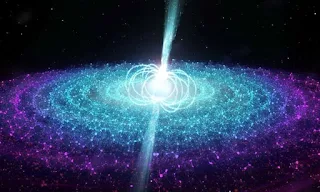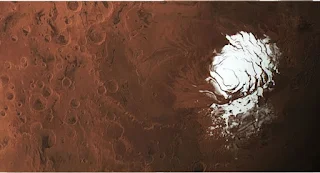Ready to Digest?

Implantable and ingestible (edible)
electronic devices that stay inside your body pose unique engineering
challenges. These should not only use the best processor but also be minimal in
size, bio-compatible, safe and extremely reliable. Reliability is all the more
important as it often turns out to be a case of life or death!
Despite so
many risks and challenges, is awesome to see how implants have developed since
the days of the first pacemaker in 1958. From cardiac pacemakers to cochlear
implants, from brain interfaces to retinal implants, there are numerous
implantable medical electronic devices available today. Even more exciting is
the emerging field of edibles-tiny, capsule-sized electronic devices that
consumed orally for diagnosis and treatment of diseases. Some edibles are
designed to remain inside the body for some time, while others do their job and
get disposed of within minutes.
Today, we
have reached a state where inventions like these no longer surprise us because
our minds have become tuned to a sci-fi future, and we have started expecting
such developments. so lets put wow factor, and instead look; at the current and
future state of implants and edibles.
Painless diabetes
testing, drug delivery and more
With
improvements in quality and reliability, there is now a reasonably good demand
for cochlear, retinal and cardiovascular implants. Cardiovascular implants have
evolved much in recent years, and have overcome past constraints regarding
compatibility with imaging systems such as magnetic resonance imaging
(MRN). Interestingly the rise in lifestyle diseases like diabetes as also led to
an increased demand for implantable devices like implantable continuous glucose
monitoring and implantable infusion pumps. There are also implantable
devices for phrenic nerve stimulation to restore breathing function in
patients, and sacral nerve stimulation for patients with bladder disorders.
Implantable neuro-stimulators, on the hand help those with neurological
disorders like Parkinson's disease.
With the
availability of better bio compatible materials that minimize the possibility
of infections, there is greater faith in implants. Researchers at Graem Clark
Institute have developed an implant that is fitted under the scalp to diagnose
and treat epilepsy.
Cochlear
implants are used when hearing aids don’t work well- that is, when the patient
has severe sensor neural hearing loss due to absent or reduced cochlear hair
cell function.The implant basically carries out the function of cochlea or inner
ear, stimulating the auditory nerve directly.
Retinal
implants are giving vision to the impaired around the world. Going one step
further, the Monash Vision Group is developing Gennaris – a bionic vision
system that bypasses damage to the eye and optic nerve to restore functional
vision for people who have injured both these or lost sight due to glaucoma and
acquired retinal disease. This system interfaces directly with the brain,
bypassing the retina and optic nerve.
Elsewhere,
researchers are also exploring bio-compatible, implantable photonic devices
that can improve health monitoring, diagnostics and light-activated therapies.
Consider the possibility of bio-compatible and Wireless-powered light-emitting
diodes (LEDs) and miniature lasers implanted inside the body. Advances in
biotechnology, such as optogenetics, will enable these photonic implants to be
integrated tightly with neurological or physiological circuits.
A good
interface between implanted devices and the brain can help in great ways the amputees and people paralyzed due to stroke or spinal cord injury.
A minimally
invasive electrode called the Stentrode developed at the University of of
Melbourne might be a step in this direction. Implanted into a blood vessel
adjoining the area of the brain that controls movement, it may help control an
exoskeleton, enabling crippled or paralyzed people to move. The implant can
apparently be installed without opening the skull, which is what makes it
attractive!
Neuralink,
a company funded by Elon Musk, is also working on implantable brain-computer
interfaces. They are developing syringe-injectable, flexible,
sub-micron-thickness substrates that can be used in implantable electronics.
The substrate is soft enough to sit harmlessly in the brain, and has electrical
properties that enable only the part at
the brain to receive the electrical stimulus.
Brain
computer interface is the future of implantable systems. It can help people
with degenerative brain diseases and neurological disorders. However, it must
be handled with care because an electrode implanted in the brain can be used
both for good bad purposes!
Rise of edibles for
diagnostics and drug delivery
When the electronic device needs to
stay inside the body forever or for a reasonably long time, it is worth
operating on a patient to implant the device. However, if you just want it to
stay inside for a few minutes, hours or even days, for the purpose of
monitoring a health condition or temporarily dispensing some medicines,
operating on the patient doesn’t make sense. This requirement led to the
development of ingestible, or edible electronics, which industry-watchers
expect to create huge waves like wearables did.
The
electronics that you swallow, encapsulate in a pill, will sit in your
gastrointestinal tract for a short time, before being ejected from your body
like regular food waste. During this time it can capture videos, release drugs,
monitor heart rate and respiration, and perform other such tasks.
Proteus Digital Health was one of the
pioneers in ingestible tech, And their technology is now used commercially by
close to ten health systems. Their solution comprises a pill, a patch that is
attached outside to the side of the stomach, and a mobile app/desktop portal.
The pill is made of whatever drugs are required, and fitted with a sensor made
of natural, ingestible materials like copper, magnesium and silicon. When a
patient swallows the pill, it dissolves like a normal pill in the stomach but
leaves behind a sensor, which is activated by fluids in the body. This sensor
sends a signal to the patch, which also measures heart rate, body position and
time of medication. This information is sent to the patient’s or
doctor’s mobile phone. Regular drug intake is very important for those
undergoing complex medical treatments such as organ transplants. This pill
could be very useful for such patients. Proteus has teamed up with Tokyo-based
firm Otsuka to embed Proteus’ sensors into Abilify-—a drug used for serious
mental illnesses.
Another
forerunner in the space is Israel-based Given Imaging. Their PillCam series
comprises pills with ingestible cameras, which can help doctors to view
different parts of the patient’s digestive system like the oesophagus or colon.
It is a painless alternative to tests like endoscopy and colonoscopy. The
PillCam Colon, for instance, uses a battery-powered camera to take high-speed
photos as it slowly goes down the intestinal tract over a time period of eight
hours. The images are transmitted to a recording device worn around the
patient’s waist and later reviewed by a doctor. Although the images are not as
sharp as those obtained through normal colonoscopy, it is a viable alternative
for those who cannot bear the pain or feel embarrassed by the procedure. Other
versions of PillCam help doctors to see the small intestine and oesophagus.
The company has also developed Smart Pill - ingestible capsule that measures
pressure, pH and as it travels through
gastrointestinal path. This helps doctors to assess Gl motility.
Bravo pH is
another capsule-based test that helps to test for acid reflux. The miniature pH
capsule attaches to the oesophagus and sends pH data wirelessly to a small recorder worn on a
shoulder strap or waistband. Information is collected over multiple days,
enabling doctors to study the frequency and duration of acid flowing back up
into the oesophagus. This helps confirm the presence of gastroe sophageal
reflux disease (GERD). This is a totally catheter free solution, so the
patients can go about normal activities and have a normal diet while the pill
unobtrusively monitors their acid reflux“ They can remove the receiver to take
a shower. This type of monitoring under a normal routine gives better results
than keeping the patient under observation.
Parts of Ingestible electronics- overview
Powering
Main
challenge: sustained powering bio-compatibility
Status:
Limited to short and one time use. Large batteries are main cause of size
consists of ingestible electronics
Outlook:
Enegy harvesting concepts, novel materials for batteries and remote powering.
Communication
Main
challenge: in-body path loss of RF signals, translating
in high energy consumption and space requirements.
Status:
transmitted signals are collected using body-worn receivers and systems are
equipped with spatially demanding antennae and powering elements
Outlook:
non-RF approaches, different antennae designs and materials, and alternative
transmission approaches.
Interaction
and steering
Main challenge:
Localization
Status:
Various concepts including biopsy drug delivery, steering and insufflation, have been demonstrated in capsule form but have not reached clinic
Outlook:
Different capsule design to meet current standard of care.
Sensing
Main challenge:
sensor fouling and limited versatility.
Status:
Concepts are limited to systems that can withstand the caustic environment in
the GI tract
Outlook:
Downsizing of sensing concepts with adaption to special requirements of the GI
tract.
Safety
Main challenge:
Obstruction of GI tract
Status:
Size limitations known from retrospective data on drug delivery system
(Pill-shaped geometry)
Outlook:
different geometries and self-disassembling or edible systems.
Eat your robot
We have bio compatible materials as well
as transistors, sensors, batteries, electrodes and capacitors made using such
materials. So you might think, why not a robot, too? But, what sets a robot
apart from other computing systems is its ability to move-a robot needs an
actuator, and attempts at making an edible one have been unpalatable all along!
Switzerland-based
research organization EPFL has made some headway recently. At a conference held
this year, researchers led by Dario Floreano presented the prototype of a
completely edible, soft, pneumatic actuator made of gelatin glycerin and water.
The design and performance of this new gelatin actuator is comparable to
standard pneumatic actuators. Its structure causes it to bend when inflated and
straighten out again when pressure is reduced. The main benefits are that it is
edible, biodegradable, bio-compatible and environmentally sustainable. Since
gelatin is melty, the actuator also turns out to be self-healing!
The
researchers explain several exciting applications for this actuator. The components
of such edible robots could be mixed with nutrients or pharmaceutical
components to improve healing, digestion and metabolism. These can be used as
disposable robots to explore, study the behavior of wild animals, cure sick
animals or train protected animals to hunt. These can also be used in relief
measures. In search-and-rescue operations, the robot can be sent without a
payload to stranded people as the robot itself is food!
But we pay the bills?
A recent
Frost & Sullivan report noted that the fastest growing segment amongst the
my types of implants is implantable neuro-stimulators, which help treat
neurological disorders such as epilepsy, dementia, Alzheimer’s disease,
Parkinson's disease and dystonia. It is also likely that in the future, these
implantable electronics will be digitally connected to improve the scope of
remote drug delivery, testing and diagnostics.
The cost of
researching and developing implants continues to be high due to the criticality
and complications involved-and often this cost reflects in the end price
points. In the report, Frost & Sullivan industry analyst Bhargav Rajan noted
that the constant stream of innovations has attracted substantial private
funding to the implantable electronics market, while public funding is expected
to improve in the future. He also suggested that technology developers can
lower development costs by collaborating with early-stage start-ups and small-
and medium-sized enterprises. This will allow them access to cross-industry
expertise and cutting-edge innovations, which, in turn, will help lower the
price points.
A majority
of the population seeking implants belongs to low- and middle-income groups.
Taking note of this factor, the report also stressed that the growth of this
sector depends not entirely on technological development but also the
availability of insurance coverage and reimbursements for such devices.
Laser tattooing
Scientists transform the surface of common materials into a
nontoxic base for electronics and this enables scientists to put electronic
sensors on everyday items.
Yieu Chyan is a chemist at Rice University in Houston, Texas.
His team uses lasers to convert carbon in the very topmost layer of different
items into an incredibly useful material called graphene(GRAA-feen). It’s a single-atom-thick
layer of carbon. The researchers are perfecting their tattooing technique for
use on common carbon-containing materials. These include paper, cork, wood,
cardboard, cloth — even foods such as potatoes and toast!
The way that carbon
atoms are arranged makes graphene appear black, so tattoos created with the
laser can look like drawings. But the researchers don’t add ink or
anything else to the surface. The graphene forms from carbon atoms that were
already part of the material.
Graphene has a
honeycomb-shaped structure and is arranged in sheets just one atom thick. As a
laser passes over some material’s surface, its intense energy locks together
those carbon atoms on the surface, turning them into graphene. Sometimes, the
laser instead jumbles up the carbon atoms. This creates a foam, which has no
structure. When this happens, the researchers pass the laser over the surface
again. Its second pass converts the carbon foam into graphene. Scientists call
the carbon treated in this way as laser-induced graphene, or LIG.
SUBMITTED
BY:
Nirmal Mathew
Nithya K Nair
Poojashree V Rai
Prajna P S
Pramitha A
1st M.Sc. {1st Semester}
SUBMITTED ON: 3rd April
2019
REFERENCE:
Internet
Journals




































